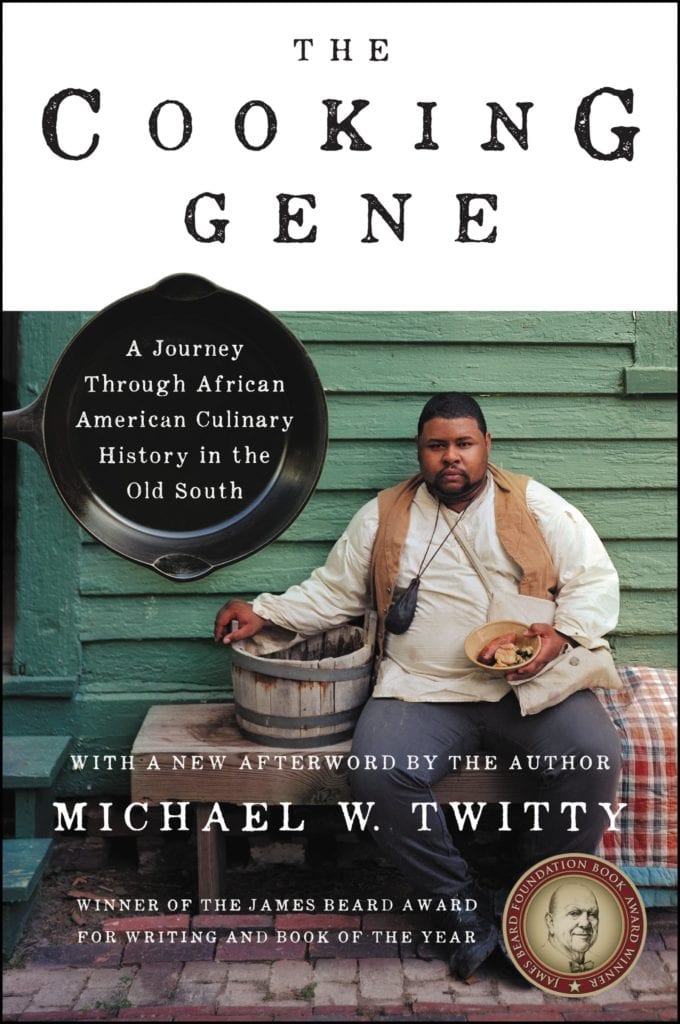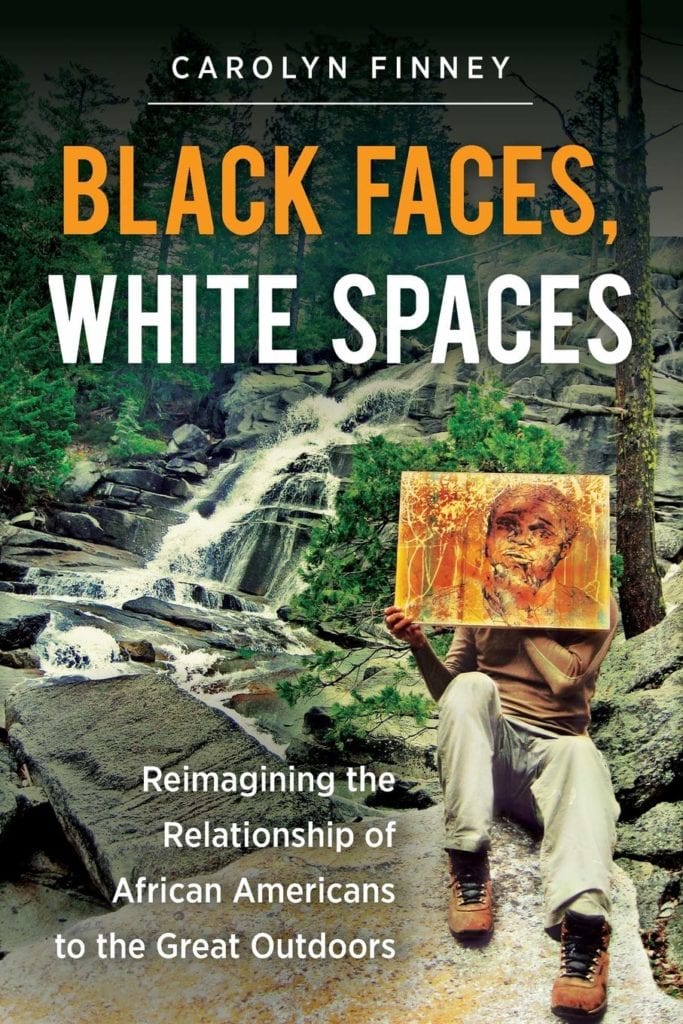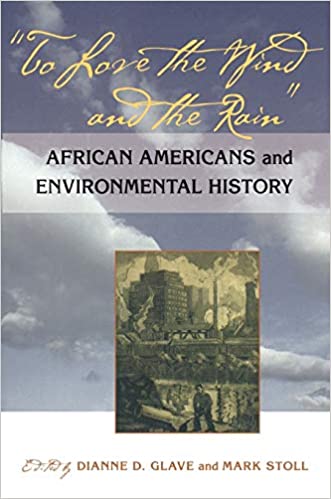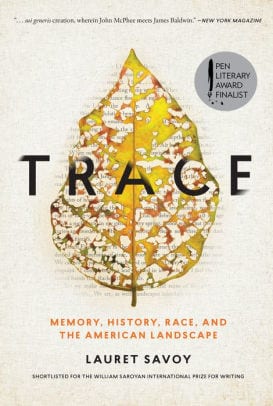February is Black History Month, so we have compiled a list of books that address, in a variety of ways, the history of African Americans and the environment. This includes often overlooked contributions to the environmental movement such as shaping our national park system and campaigning to stop harmful pollution, and explorations of the varied ways history affects how many Black Americans relate to nature.
 Rooted in the Earth: Reclaiming the African American Environmental Heritage, by Dianne D. Glave – “In Rooted in the Earth, environmental historian Dianne D. Glave overturns the stereotype that a meaningful attachment to nature and the outdoors is contrary to the black experience. In tracing the history of African Americans’ relationship with the environment, emphasizing the unique preservation-conservation aspect of black environmentalism, and using her storytelling skills to re-create black naturalists of the past, Glave reclaims the African American heritage of the land. This book is a groundbreaking, important first step toward getting back into nature, not only for personal growth but for the future of the planet.” (Goodreads)
Rooted in the Earth: Reclaiming the African American Environmental Heritage, by Dianne D. Glave – “In Rooted in the Earth, environmental historian Dianne D. Glave overturns the stereotype that a meaningful attachment to nature and the outdoors is contrary to the black experience. In tracing the history of African Americans’ relationship with the environment, emphasizing the unique preservation-conservation aspect of black environmentalism, and using her storytelling skills to re-create black naturalists of the past, Glave reclaims the African American heritage of the land. This book is a groundbreaking, important first step toward getting back into nature, not only for personal growth but for the future of the planet.” (Goodreads) Legacy on the Land: A Black Couple Discovers Our National Inheritance and Tells Why Every American Should Care, by Audrey Peterman – This book follows the author and her husband on a trip to many of our national parks during which they explore the contributions of people of color to our national park system and how they remain underrepresented in outdoor spaces like the parks as well as the environmental movement. She writes, “we came to the realization that the park system is a repository of the American experience…Since people of color were integrally involved in building America, it follows that our history is interwoven within the parks.”
Legacy on the Land: A Black Couple Discovers Our National Inheritance and Tells Why Every American Should Care, by Audrey Peterman – This book follows the author and her husband on a trip to many of our national parks during which they explore the contributions of people of color to our national park system and how they remain underrepresented in outdoor spaces like the parks as well as the environmental movement. She writes, “we came to the realization that the park system is a repository of the American experience…Since people of color were integrally involved in building America, it follows that our history is interwoven within the parks.” The Cooking Gene: A Journey through African American Culinary History in the Old South, by Michael W. Twitty – In this book, the author “trac[es] the roots of his own family and the charged politics surrounding the origins of soul food, barbecue, and all Southern cuisine.” In addition to the human history of recipes and food, this includes the history of people’s relationship to the environment through agriculture, and how that relationship differs by race. This approach provides a unique perspective on the intersection between natural and human history in the U.S. and draws diverse readers in with something that we all share – food.
The Cooking Gene: A Journey through African American Culinary History in the Old South, by Michael W. Twitty – In this book, the author “trac[es] the roots of his own family and the charged politics surrounding the origins of soul food, barbecue, and all Southern cuisine.” In addition to the human history of recipes and food, this includes the history of people’s relationship to the environment through agriculture, and how that relationship differs by race. This approach provides a unique perspective on the intersection between natural and human history in the U.S. and draws diverse readers in with something that we all share – food. Black Faces, White Spaces: Reimagining the Relationship of African Americans to the Great Outdoors, by Carolyn Finney – “Bridging the fields of environmental history, cultural studies, critical race studies, and geography, Finney argues that the legacies of slavery, Jim Crow, and racial violence have shaped cultural understandings of the ‘great outdoors’ and determined who should and can have access to natural spaces. Looking toward the future, she also highlights the work of African Americans who are opening doors to greater participation in environmental and conservation concerns.” (University of North Carolina Press)
Black Faces, White Spaces: Reimagining the Relationship of African Americans to the Great Outdoors, by Carolyn Finney – “Bridging the fields of environmental history, cultural studies, critical race studies, and geography, Finney argues that the legacies of slavery, Jim Crow, and racial violence have shaped cultural understandings of the ‘great outdoors’ and determined who should and can have access to natural spaces. Looking toward the future, she also highlights the work of African Americans who are opening doors to greater participation in environmental and conservation concerns.” (University of North Carolina Press) To Love the Wind and the Rain: African Americans and Environmental History, Edited by Dianne D. Glave and Mark Stoll – Discussions about why Black, Indigenous, and People of Color (BIPOC) are underrepresented in outdoor recreation and mainstream environmental activism sometimes assume that BIPOC are less interested in the environment or less connected to it than white people. On the contrary, articles in this book detail African Americans’ deep relationships to the environment through U.S. history, discussing topics such as slavery, hunting, gardening, religion, the turpentine industry, outdoor recreation, women, and politics. There are multiple ways to think about and value our natural surroundings, and this book explores how historical experiences affect the ways African Americans relate to the environment.
To Love the Wind and the Rain: African Americans and Environmental History, Edited by Dianne D. Glave and Mark Stoll – Discussions about why Black, Indigenous, and People of Color (BIPOC) are underrepresented in outdoor recreation and mainstream environmental activism sometimes assume that BIPOC are less interested in the environment or less connected to it than white people. On the contrary, articles in this book detail African Americans’ deep relationships to the environment through U.S. history, discussing topics such as slavery, hunting, gardening, religion, the turpentine industry, outdoor recreation, women, and politics. There are multiple ways to think about and value our natural surroundings, and this book explores how historical experiences affect the ways African Americans relate to the environment. Trace: Memory, History, Race, and the American Landscape, by Lauret Savoy – Through both personal stories and historical accounts, Savoy “weaves together human stories of migration, silence, and displacement, as epic as the continent they survey, with uplifted mountains, braided streams, and eroded canyons. Trace delves through fragmented histories—natural, personal, cultural—to find shadowy outlines of other stories of place in America.” This book argues that history leaves its mark on the land and on our lives, and so the past is strongly felt today, even when we don’t realize it.
Trace: Memory, History, Race, and the American Landscape, by Lauret Savoy – Through both personal stories and historical accounts, Savoy “weaves together human stories of migration, silence, and displacement, as epic as the continent they survey, with uplifted mountains, braided streams, and eroded canyons. Trace delves through fragmented histories—natural, personal, cultural—to find shadowy outlines of other stories of place in America.” This book argues that history leaves its mark on the land and on our lives, and so the past is strongly felt today, even when we don’t realize it.
Looking to the future, we can recognize that there are many diverse ways of thinking about and interacting with the environment, and that those relationships are influenced by personal, regional, and national histories. We can also all work to broaden equal access to nature to all people and to protect the environment that we all rely on to be healthy and survive. Lehigh Valley-based Afros in Nature is a group that supports BIPOC in connecting to nature in a way that recognizes the histories that people of different races may associate with outdoor spaces. The organization is led by BIPOC, for BIPOC, and is “committed to addressing mental health concerns through nature-based healing and therapeutic activities, including hikes, nature walks, communal gardening, and sustainable food cultivation.” Another program working to remedy historical inequities in opportunities in the environmental field is the Color of Nature initiative at the Lehigh Gap Nature Center. Color of Nature hires Lehigh Valley students of color who gain experience with conservation and environmental education and lead educational and recreational programs to introduce others to nature. Groups like Afros in Nature and Color of Nature are writing the next chapters in the history told in the books above, but we all have a role to play. Learning and honoring the stories of African Americans’ contributions to our environment is one way to start.
